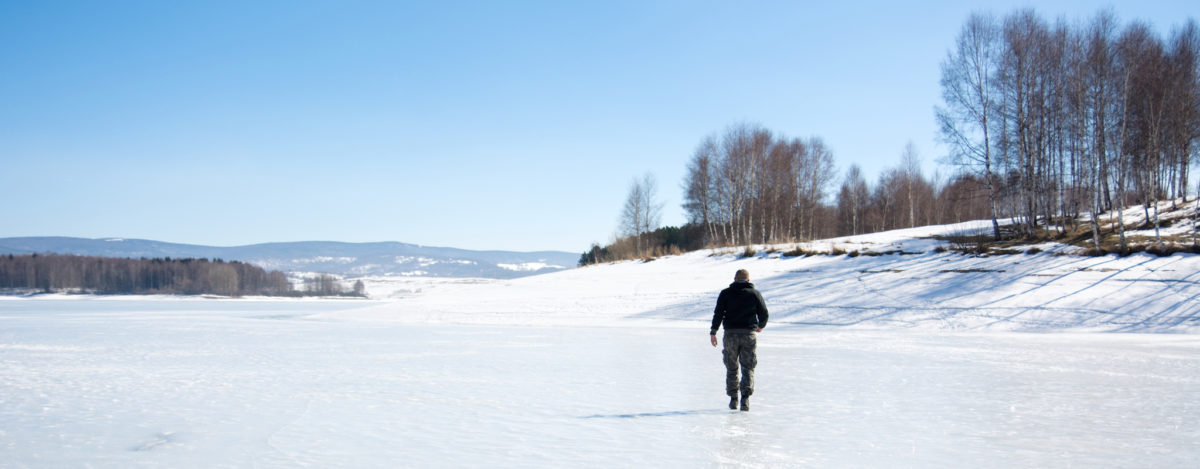Cold and Diabetes—Antifreeze in the Blood?
Homeostasis. Thermoreceptors, thermogenesis, blood glucose. A lovely vocabulary of regulation. When it’s cold, you shiver; when it’s hot, you sweat, and when you’re a person with diabetes, you begin to understand the sheer amount of energy it takes to keep a human body at 98.6 degrees Fahrenheit all the time.
Now that winter’s here, it’s time to explore the mysterious relationship between diabetes and cold weather. Most of the people I know who have type 1, also have strong opinions about what cold does or doesn’t do to one’s blood sugars, but the science behind each opinion remains murky for now.
I can tell you, anecdotally if not scientifically, that the feeling of being cold might mask the feeling of being low. Both feel like a subtle cellular panic, and sometimes when I’m out in the cold I don’t realize how low I am.
One time in college, I went sledding with my friends. In order to reach the best hill, we had to park on one side of a frozen lake and walk across. Wind-kicked snow swirled around us, “reducing,” in that wonderful meteorological phrase, “visibility.” It was probably between 10 and 20 degrees Fahrenheit, and I’d brought a can of Coca-Cola for sugar.
Being from Georgia, I had no idea what cold, serious cold, could do to one’s blood glucose level (BGL). Simply by walking across the lake (an eerie and lovely experience, as strangers on ice skates appeared out of the mist and swept past us), my BGL dove to the 40s mg/dL. Then I realized I’d forgotten my Coke in the car. My friend had to hurry back over the lake, drive around and run across a snowy golf course to bring me sugar. The Coke fought the insulin but lost, and we had to drive off in search of more sugar.
Researchers do not fully understand the correlation between blood glucose levels and temperature. Heat can apparently either lower blood sugars or make them go high. Cold weather supposedly raises A1Cs, but what about getting low from walking across a lake? Perhaps people stay indoors and fail to exercise when it’s cold, and it is this inactivity, rather than the cold itself, that contributes to higher A1Cs?
Whatever, the case, experience has taught me that being active in the cold makes me go low. It makes some intuitive sense: in low temperatures, the body needs to metabolize glucose in order to keep warm, which makes blood glucose levels drop. However, no scientific consensus exists.
The relationship between diabetes and cold gets weirder.
Apparently, the colder a place gets, the more likely its inhabitants are to develop type 1 diabetes (T1D). Diagnosis rates in countries like Norway and Finland are much higher than diagnosis rates in equatorial countries.
In fact, according to one Canadian physician, it’s possible that T1D once helped human beings survive deadly cold.
Dr. Sharon Moalem hypothesizes in his book Survival of the Sickest that diabetes may have been an evolutionary adaptation that helped humans stay warm during a sudden, terrible ice age 12,000 years ago called “The Younger Dryas.” Dr. Moalem’s theory rests on the principle that sugar acts as a kind of antifreeze.
He mentions the Wood Frog, an amphibian native to Canada and the northern U.S., to support his thesis. The Wood Frog has developed the ability to concentrate glucose around its heart and lungs in order to survive extreme cold. Their skin does freeze—they go “clink” when you drop them—but the concentrated glucose in their vital organs’ cells keeps them alive until their skin can thaw (National Geographic).
In other words, Dr. Moalem’s suggests that people with diabetes living through The Younger Dryas would have been less likely to freeze to death because of their sweet, syrupy blood.
Sweetening one’s own blood wouldn’t be a sustainable evolutionary maneuver, of course: untreated hyperglycemia eventually kills. Still, Dr. Moalem’s theory offers us the compelling image of some prehistoric person with diabetes becoming the lone, frostbitten survivor of a killer cold snap, and living just long enough to pass along his or her mutated genes.
Such theories are too slick and entertaining to immediately convince the scientific community. Today the relationship between cold and diabetes remains the victim of empiricism’s favorite bogeyman, insufficient data. So I cannot tell you with any degree of certainty what frosty days will or won’t do to a diabetic’s delicate blood chemistry, only that going out into the cold can provoke something unpredictable.
I can, however, offer some practical advice. Stay hydrated. Check your blood glucose level often, even when your fingers are cold. Bring enough sugar on your snowy adventures to drag you up from a hypoglycemic hell. Bring a friend who can help you out if you need it, one who would run across a frozen lake for you. If you have a vial of insulin with you, keep it close to your body to keep it from freezing and becoming useless.
Diabetes might have helped one of your ancestors survive a night of wretched, spine-curling cold. Probably not, but who knows? It’s something to think about while you go sledding, wait for your car’s heat to turn on, or walk to work through a hush of snow. We don’t understand the relationship between cold and diabetes, but in due time, the data become sufficient. Until then, be careful out there.





